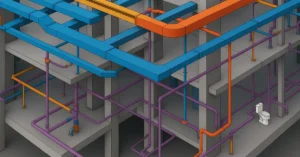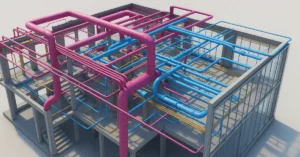
Exploring the Aesthetics and Principles of Minimalist Architecture
In the realm of architecture, few movements have garnered as much attention and admiration as minimalist design. Rooted in the principles of simplicity, functionality, and sustainability, minimalist architecture has transcended mere aesthetics to become a philosophy—a way of life. As we journey through 2024, the allure of minimalist design continues to captivate architects, designers, and homeowners alike. In this in-depth exploration, we delve into the core principles, evolving aesthetics, and profound impact of minimalist architecture in the contemporary landscape.
Simplicity Redefined:
At the heart of minimalist architecture lies a profound appreciation for simplicity. In 2024, architects are redefining what it means to create spaces that are uncluttered, serene, and visually striking. Clean lines, open spaces, and a sense of tranquility define the aesthetic of minimalist design, inviting occupants to experience a profound sense of calm amidst the chaos of the modern world. By eliminating unnecessary ornamentation and embracing a minimalist ethos, architects are creating environments that inspire clarity of thought and promote well-being.
Functionality at its Core:
Functionality is a cornerstone of minimalist architecture, with form always following function. In 2024, architects are pushing the boundaries of functionality, seeking innovative ways to enhance the usability and efficiency of spaces. From clever storage solutions to adaptable furniture designs, every element of a minimalist building is meticulously crafted to serve a purpose. By prioritizing function without sacrificing form, architects are creating spaces that seamlessly integrate into the lives of their occupants, fostering a sense of harmony and balance.
Sustainability as a Driving Force:
In an era marked by growing concerns about environmental sustainability, minimalist architecture has emerged as a beacon of hope. In 2024, architects are embracing sustainable design practices with renewed fervor, incorporating green building codes and principles into their projects. From the use of recycled materials to the integration of renewable energy systems, sustainability is not just a trend but a core value of minimalist architecture. By minimizing waste, reducing carbon footprints, and promoting eco-friendly lifestyles, minimalist design is leading the way towards a more sustainable future.
Materials Matter:
The choice of materials plays a crucial role in defining the aesthetic and character of minimalist architecture. In 2024, architects are turning to natural, authentic materials such as wood, stone, and concrete to create spaces that are both timeless and elegant. These materials not only exude a sense of warmth and authenticity but also age beautifully, developing a rich patina over time. By eschewing artificial finishes and synthetic materials, architects are embracing the inherent beauty of raw materials, creating spaces that are deeply resonant and emotionally evocative.
A Timeless Aesthetic:
One of the most remarkable aspects of minimalist architecture is its enduring appeal. In a world where trends come and go, minimalist design stands the test of time, retaining its relevance and allure decade after decade. In 2024, architects are embracing the timeless aesthetic of minimalist design, creating spaces that are as relevant today as they will be tomorrow. By focusing on the essential and eliminating the superfluous, minimalist architecture captures the essence of beauty in its purest form, leaving a lasting impression on all who encounter it.
The Impact of Minimalist Architecture:
From residential homes to commercial buildings, minimalist architecture has had a profound impact on the way we live, work, and interact with our environment. By promoting simplicity, functionality, and sustainability, minimalist design has transformed the built landscape, inspiring a new generation of architects and designers to rethink the way we create and experience space. In 2024, minimalist architecture continues to shape our cities, our homes, and our lives, offering a vision of beauty that is both timeless and transcendent.
Conclusion:
As we conclude our exploration of minimalist architecture in 2024, it becomes clear that this movement is more than just a design trend—it is a philosophy, a way of life. By embracing simplicity, functionality, and sustainability, architects are creating spaces that are not only beautiful but also meaningful and transformative. In a world that is increasingly complex and chaotic, minimalist architecture offers a welcome respite, inviting us to pause, reflect, and appreciate the beauty of the essential. As we look to the future, the principles and aesthetics of minimalist design will continue to inspire and captivate us, shaping the world around us for generations to come.
If you’re interested in learning more about architecture firms in Europe, check out this comprehensive list of the top 50 firms compiled by Archgyan. From innovative startups to long-established industry leaders, this list has it all. Take a look and discover some of the most inspiring and influential architecture firms in Europe today.
If you’re interested in architecture and want to learn more about this amazing field, subscribe to our podcast on youtube
For more SketchUp tutorials, head to https://www.sketchupguru.com










